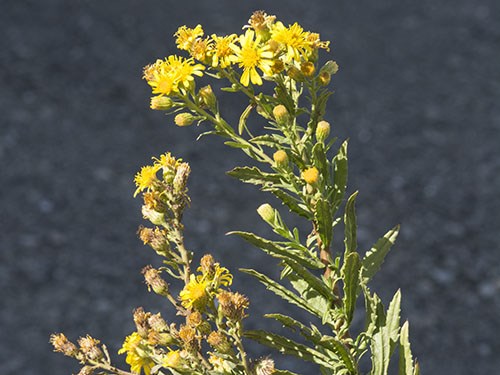Created on: Wednesday, Jun 8th, 2016
The following webpages were consulted for this screen: Tropicos: http://www.tropicos.org/Name/2702391; GBIF: http://www.gbif.org/species/3101184; USDA PLANTS: http://plants.usda.gov/core/profile?symbol=DIVI6; The Plant List: http://www.theplantlist.org/tpl1.1/record/gcc-16305; Calflora: http://www.calflora.org/cgi-bin/species_query.cgi?where-calrecnum=13053; EOL: http://www.eol.org/pages/492274/overview; Dave’s Garden: http://davesgarden.com/guides/pf/go/183277/; Jepson: http://ucjeps.berkeley.edu/eflora/eflora_display.php?tid=2456; Wikipedia: https://en.wikipedia.org/wiki/Dittrichia_viscosa; RHS: https://www.rhs.org.uk/Plants/5997/i-Dittrichia-viscosa-i/Details; CNPLX: http://www.cnplx.info/nplx/species?taxon=Dittrichia+viscosa; Victorian Weeds: http://vro.agriculture.vic.gov.au/dpi/vro/vrosite.nsf/pages/invasive_fal... http://vro.agriculture.vic.gov.au/dpi/vro/vrosite.nsf/pages/impact_false... Dave’s Garden: http://davesgarden.com/guides/pf/go/183277/; Weeds of Australia: http://keyserver.lucidcentral.org/weeds/data/media/Html/dittrichia_visco... Cal-IPC (congener): http://www.cal-ipc.org/paf/site/paf/327; Tasmania WRA: http://dpipwe.tas.gov.au/Documents/Dittrichia-viscosa-assessment.pdf
California agriculture: http://wric.ucdavis.edu/PDFs/CalAg6702p110-2013.pdf
Reviewed by Lynn Sweet.
- < 13 : accept (low risk of invasiveness)
- 13 - 15 : evaluate further
- > 15 : reject (high risk of invasiveness)

